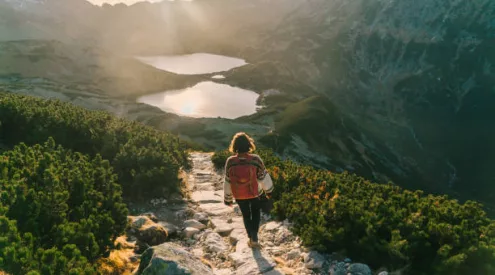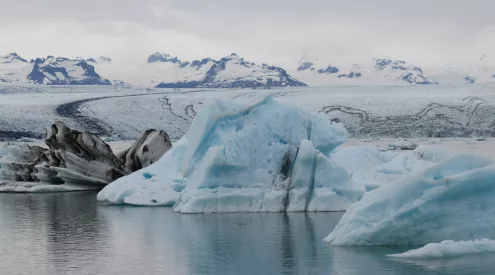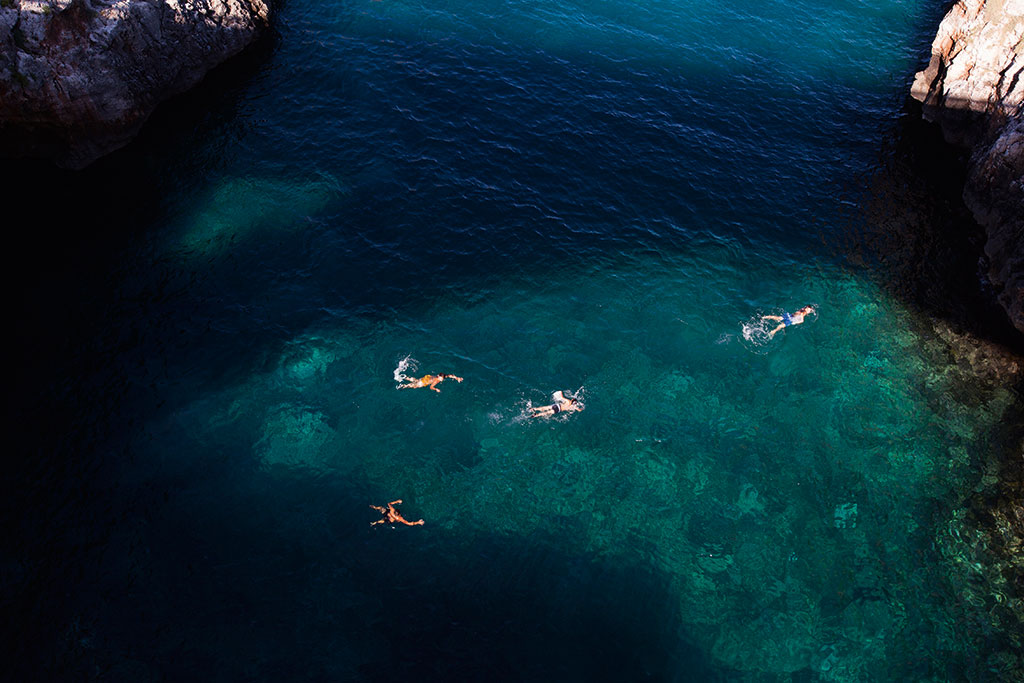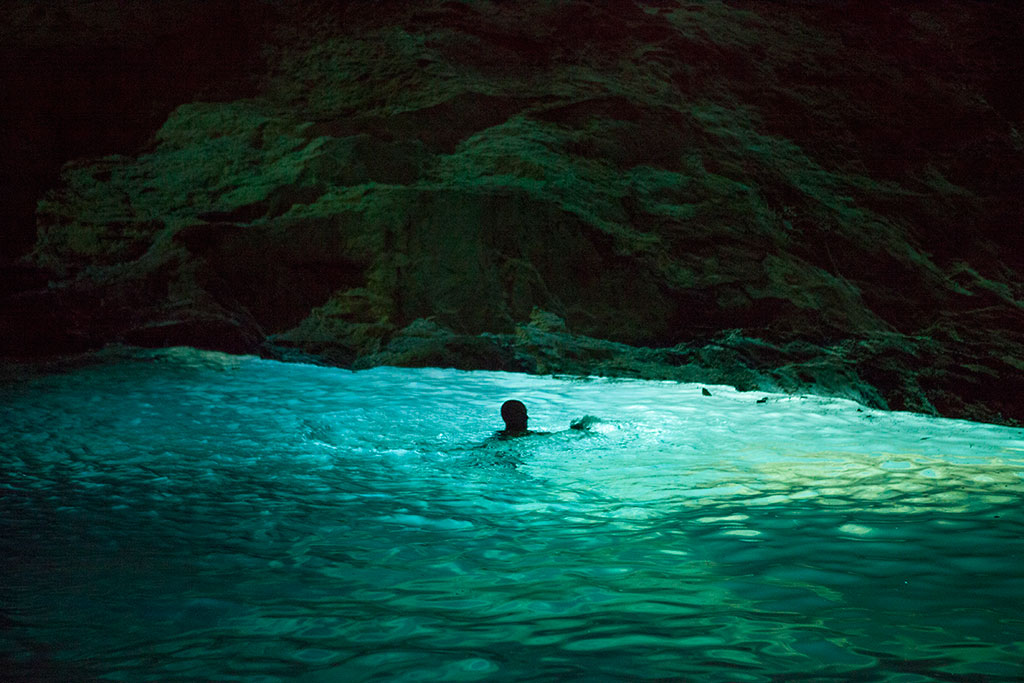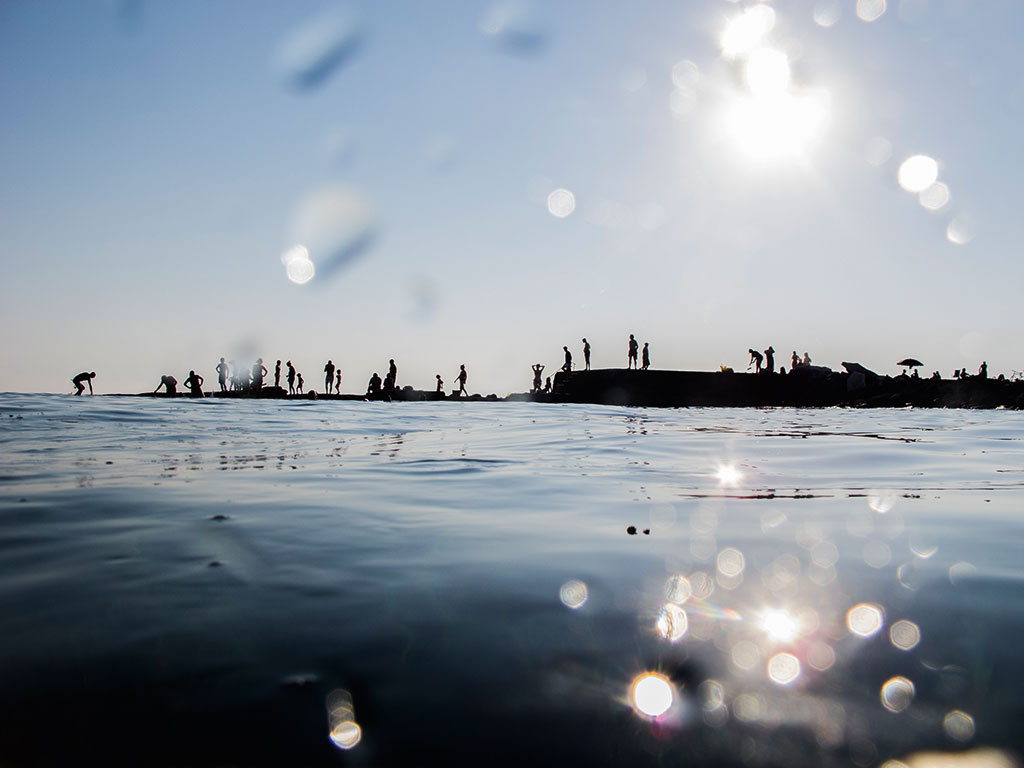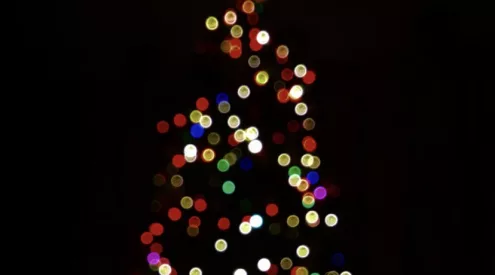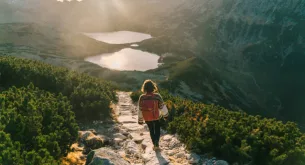Love to dive into beautiful, natural pools of blue? A water addict found southern Italy’s most magical coves, caves and springs for swimmers. Words and photographs by Alexia Beckerling.
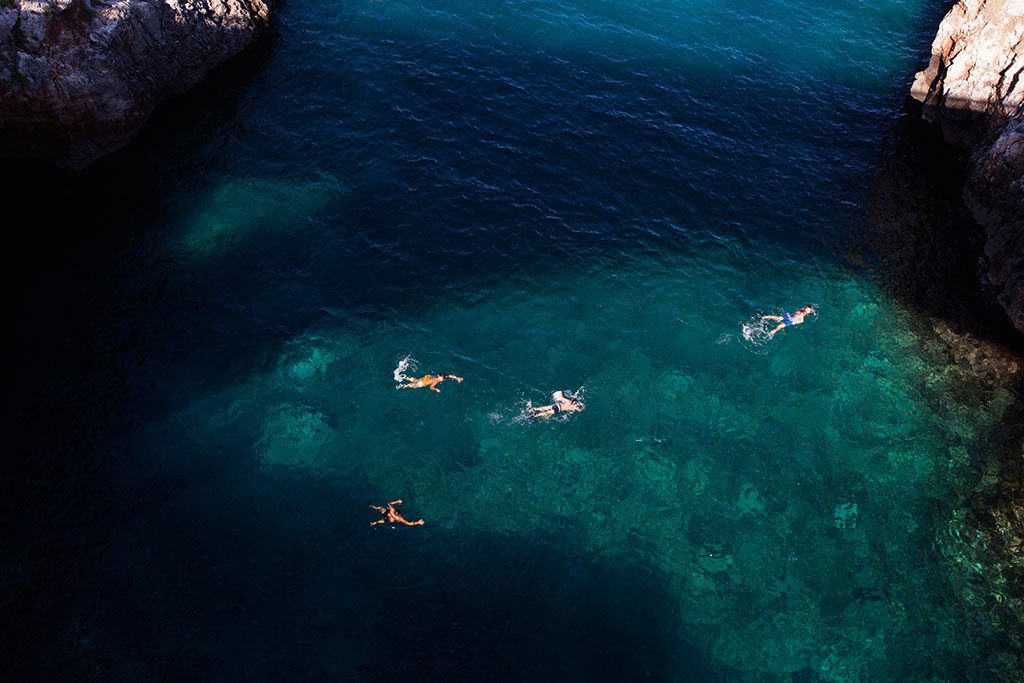
At Il Ciolo, a bridge provides an aerial view of bathers seemingly suspended in the turquoise water below. The sea is almost always calm here.
When Salentini talk about their homeland they smile, shrug their shoulders, turn their palms to the sky and say, ‘Il mare, il sole, il vento’ as if apologising that the sea, the sun, the wind is all they have. For newcomers like myself, this peninsula – which forms the heel of Italy’s boot and lies between the Adriatic and Ionian seas – offers an abundance of natural resources to enjoy, including the alluring, turquoise waters. Salento has recently become popular. As investment in tourism has grown, so too have the numbers of people who come here to languish in the sea, soak up the cultural traditions and sample the sublime cuisine. The Brindisi Papola Casale Airport, one of two that serve the area, had a record number of passengers in the 2015 summer season – a four per cent increase from the previous year.
But while Salento has now taken its rightful place on the global tourism map, its significance reaches back more than 3000 years. The peninsula is littered with archaeological sites and the local museums have abundant collections of Mesappian pottery from the fourth to third centuries BC. The Mycenaean Greeks included Salento in their Mediterranean trade routes, as did the Ancient Greeks. A statue believed to be of the goddess Minerva was recently discovered in Castro, reinforcing Virgil’s location of the temple in his epic poem Aeneid. Brindisi was the southernmost point of the Roman Appian Way, and oil and grain production became the mainstay of the local economy during the Imperial Age.
Today visitors are here to relax, and any conquests are of an amorous nature. While upcountry Italians and foreigners jostle for umbrella space on packed beaches, locals enjoy quiet swimming spots relatively unknown to outsiders. Discovering these gems didn’t only entail immersing myself in crystalline waters away from the crowds; I was also to encounter a goddess, learn some ancient myths and, like the travellers of old, face a few challenges. If you decide to follow in my wake, be sure to pack a good pair of swimming shoes and learn the words ‘scirocco’ and ‘tramontana’ – names given to the winds that blow from the south or the north.
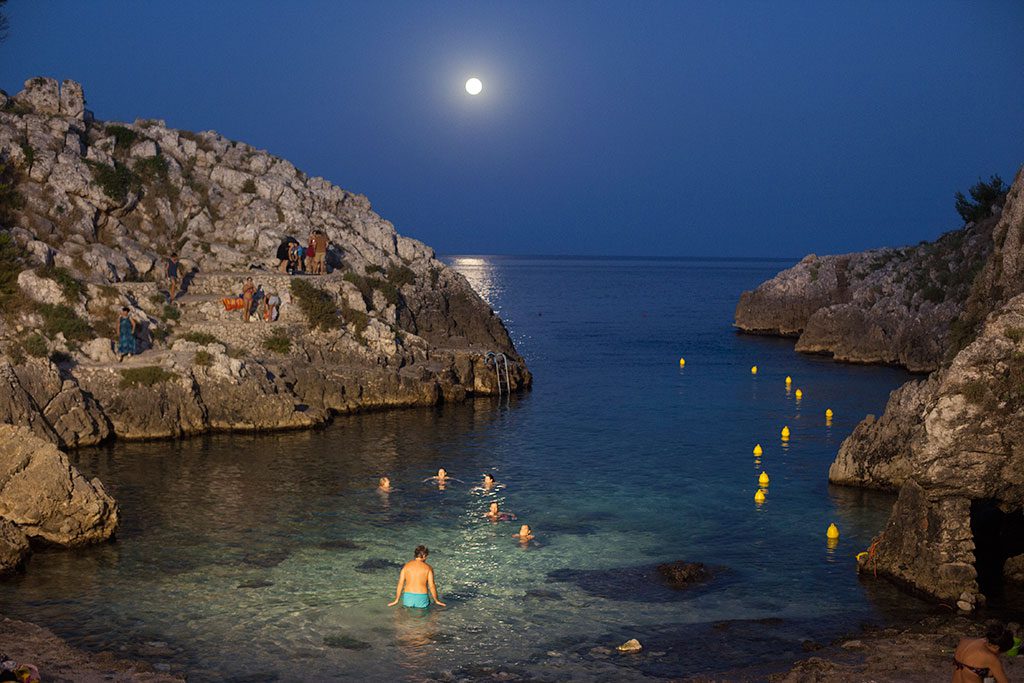
The Acquaviva inlet is illuminated during the summer months and locals bathe and picnic here well into the night.
‘The real Salento starts at Otranto and ends at Santa Maria di Leuca,’ said Mauro Zezza, my olive skinned and good-looking local guide. Technically speaking, Salento is a region whose borders are further north. But, like their ancestors, Italians are very protective of the region from which they hail. Over the next seven days, we took to the waters along the rocky Adriatic coast from Otranto to the tip of the peninsula and a little bit beyond, and headed back for repeat swims at the most memorable places.
The SP358 road from Otranto to Santa Maria di Leuca is considered one of the most beautiful drives in the region. Our first port of call was Porto Badisco, a fishing village south of Otranto where, according to Virgil, Aeneas landed after fleeing from Troy. Apart from feeling enormously relieved to jump into refreshing, turquoise water, it was equally satisfying to be in an area where a hero of epic proportions may well have set foot. Porto Badisco, protected from all winds but the scirocco, is perfect for swimming and jumping off the low cliffs surrounding the deep bay.
Just seven kilometres south, at Santa Cesarea Terme, thermal springs charged with minerals seep from underground and filter through the rock face and caves into the sea. We headed down a steep ramp south of the spring town to Porto Miggiano, a small port carved out of the stratified rock face. After a short walk along the harbour wall we came to a large, concrete pier where tanned Italians chatted and played cards and children jumped repeatedly into the cool, deep water. We followed suit. I climbed back onto the pier in a euphoric state, convinced I was feeling the effects of the thermal minerals.
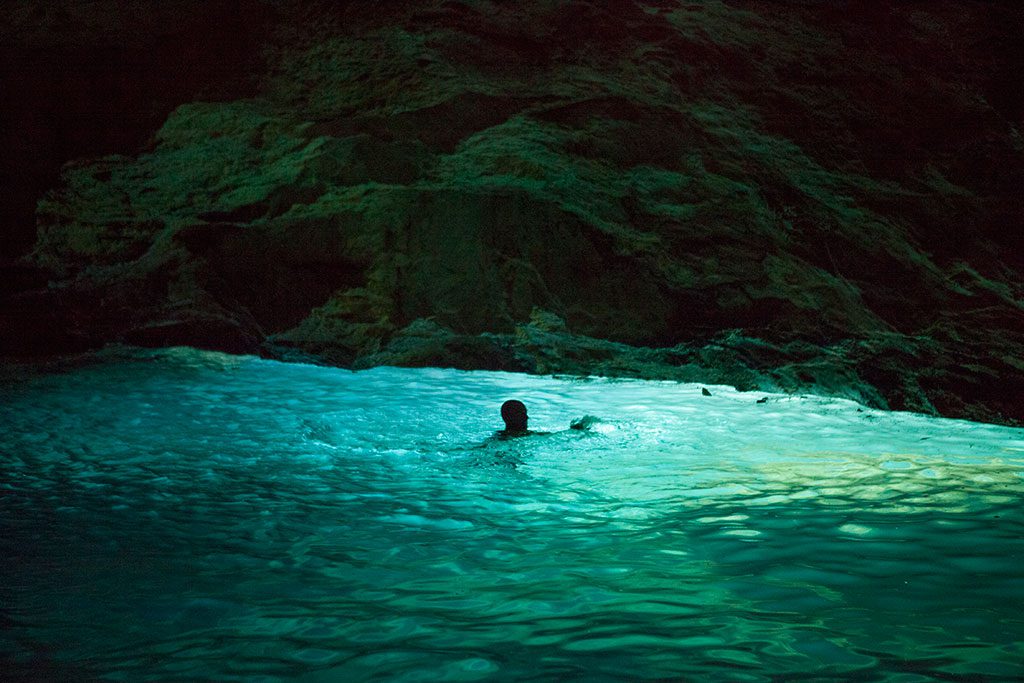
Daylight shines through a gap in the cave wall, turning the Grotta Verde near the Marina di Andrano into an emerald chamber. Swimming here is magical.
The summer heat can be relentless and those in the know head 10 kilometres south to Acquaviva, a small, verdant gorge about 200 metres deep, where underground freshwater springs run into the sea. Amelia Rizzello, who works in the nearby inland town of Diso, chatted to us while she massaged her husband’s shoulders with her feet. ‘For me, this is the only natural place. There is little work of man,’ she said. Bathing at Acquaviva, where the water appears out of focus when the fresh streams mix with the sea, is like swimming in the sparkling facets of liquid topaz.
About three kilometres further on, the colour of the water turns from topaz to emerald inside the Grotta Verde on the south side of the Marina di Andrano. Most bathers loll about in the water at the cave entrance. The more adventurous swim through a narrow channel below an overhang into the cave. The first sight of shimmering, green light reflecting off the water, lit by the sun’s rays penetrating a large gap in the cave wall, is breathtaking. It’s hard to retreat from the jewel-like cavern – even when the shivers set in.
I was determined to swim to all of the locations I had heard about, but some of the most noteworthy caves can only be reached by boat. At Marina di Novaglie, 17 kilometres south of Marina di Andrano, two kiosks in the parking lot advertise boat excursions. Valeria Casciaro looks like the reincarnation of a Greek goddess with soft black curls framing her tanned, broad cheekbones.
‘We are a family of fishermen. We were born here,’ she told me. Valeria’s father, Salvatore Casciaro, told me about a rare monk seal that used to sit on the point below and sing. ‘The disaster is man,’ said Salvatore. Because of the dwindling fish stocks, local fishermen have turned to taking tourists on excursions to make ends meet.
The boat trip from Marina di Novaglie reveals caves and anecdotes known exclusively to local fishermen. Valeria’s brother shows us the cave where the area’s only known fisherwoman waited while her nets were out. Il Ciolo, a small coastal canyon named after the birds that live there, is the site of a number of caves including La Grotta degli Innamorati, the cave of the lovers. A few metres from here a swim of faith under the rock face leads to a turquoise cavern demarcated by a resounding thud followed by white spray at high tide. An impressive 36-metre bridge spans the narrow gorge, under which bathers nestle on a narrow concrete slipway. On the north side of the bridge it is possible to walk down a set of stairs to a less populated entry point. The water is a deep cobalt blue and calmest when the westerly ponente wind blows.
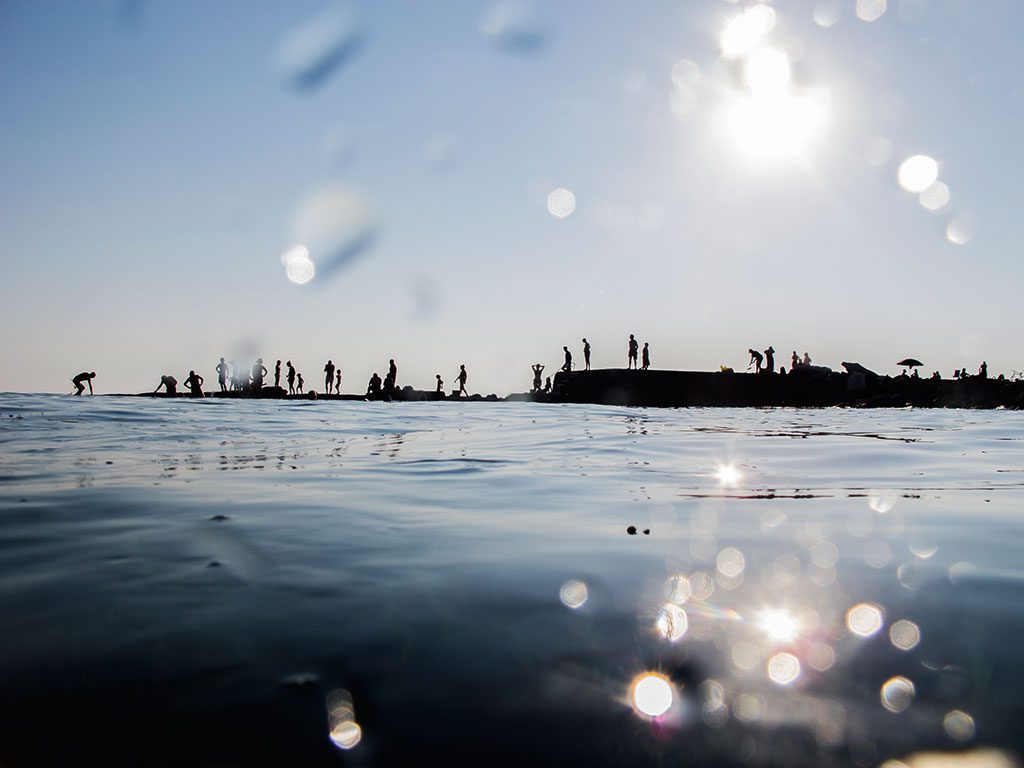
An abandoned twp-tier concrete pier provides access to clear, cool water adjacent to the small port at Torre Pali. It’s a favourite gathering and swimming spot for those who don’t like the sand and the crowds on the local beach.
To my surprise, and contrary to some of the pictures you see in the guide books, one of the challenges of my quest for places to swim included finding clean water. The scirocco wind that blows from the south brings in flotsam and jetsam from the Strait of Otranto. Cosimo Pizzolante, a petite, tanned ex-naval engineer with long silver hair who looks like the reincarnation of one of Aeneas’s crew, was hanging out at a makeshift bar above the Ristola Point at Santa Maria di Leuca. I asked him where the best swimming was and he pointed to the bay below where the salty water has eroded the limestone rock into coastal caves. ‘The water is always clean here, even when there is scirocco.’
Around the tip of the pensinsula and up the west coast of the Ionian Sea, we were welcomed to Torre Vado by Francesco Colella. He was instrumental in keeping developers away from this stretch of coast. ‘My grandparents told me that the water helps women who are struggling to have children to fall pregnant,’ he said of the many healing properties of the freshwater springs. I felt like I had travelled back in time and could have been with a group of Ancient Romans easing into the 16˚C water after pressing olives all day. Getting into the water felt like a rite of passage; everyone sighed in unison as the initiate grimaced, then smiled with the elation of a baptism of cold water emanating from deep within the Earth.
One evening, I joined two women treading water and chatting off the pier near the Torre Pali port. One of them said, ‘La vita e cosi. Devi cercarla.’ Life is like that. You have to look for it. I swam further out and gazed back at the silhouetted figures moving along the pier. I reflected on my quest to find local bathing spots which pushed me to ditch my guide book and explore the unknown. Yes, I thought to myself, life and the journeys we make are like that. You have to find them.
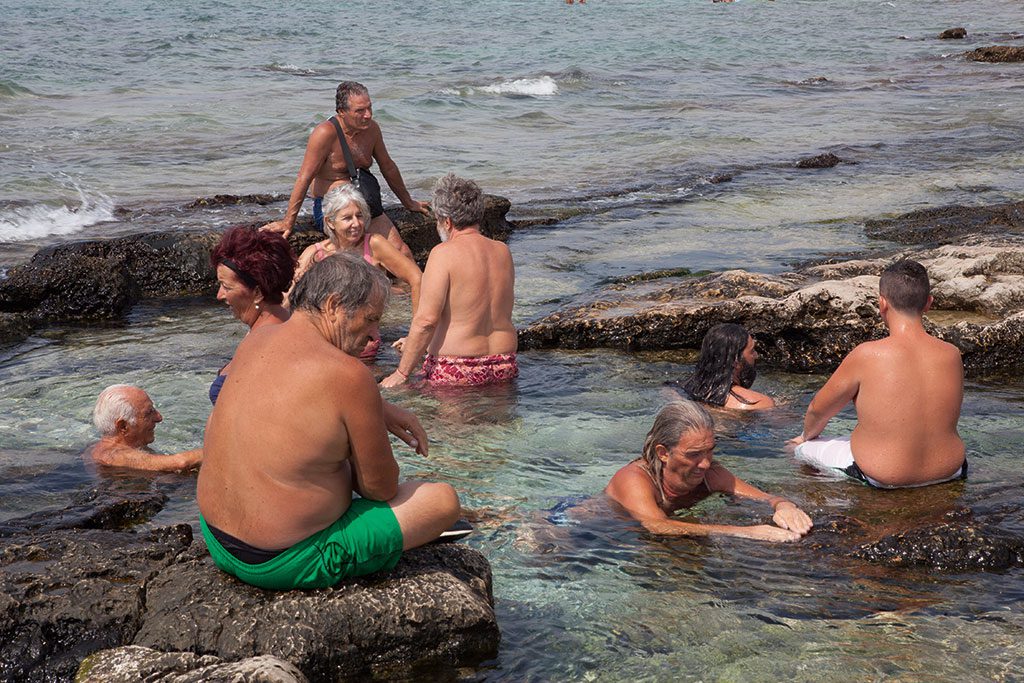
The cool spring water at Torre Vado is thought to tone, improve circulation and treat fertility. The same crowd gathers here every day, as if devoted to the waters, and when not engaged in energetic conversation people appear deep in meditation.
Plan your trip
Getting there
Emirates flies from Cape Town or Joburg to Rome for R10285. emirates.com The one-hour flight with Alitalia from Rome to Brindisi is R438 (€30), if you book early. alitalia.com The Frecciargento train from Rome to Lecce takes just under six hours and costs from R307 (€21). italiarail.com
Getting around
The local train and Salentoinbus services reach all the swimming spots but it is better to rent a car if you want to explore the ancient olive groves and small villages. Rental starts at R220 (€15) per day.
Need to know
South Africans need a Schengen visa to enter Italy (R1361 for adults, R942 for under 12s, free for kids under six). The Salentines are warm, friendly and helpful. If you are packing a picnic basket, it is best to shop at a local supermarket as prices at roadside stalls are hiked for tourists.
Do this
Explore Lecce, the baroque capital of Salento, which is called ‘the Florence of the South’, with a host of beautiful churches carved out of the local sandstone, Roman ruins, good restaurants and stylish shops.
Visit the former Byzantine port of Otranto, which boasts an aquamarine harbour, exquisite Romanesque cathedral with intricately designed mosaic floors, an Aragonese castle and artisanal ice-cream shops. (An ice cream or two a day is a must – and they are good everywhere!)
Stay here
To get a taste of the real Salento (and its cuisine), stay in farmhouses Masserie. Most offer optional breakfast and dinner. agriturismo.it
Masseria Panareo is on a promontory above the Grotta dei Cervi valley near Porto Badisco. Alessandro Zezza and his mother, Donna Pina, prepare traditional meals using olive oil and produce from their farm. The 18 rooms are rustic in style, some with vaulted ceilings. From R1390 (€95) for two B&B. masseriapanareo.com
Masseria Uccio is a 17th-century farmhouse inland between Marina di Andrano and Marina di Novaglie. Experience tranquil countryside and life on a working farm with the added bonus of a sea view. Open from mid-May to the end of September. From R483 pp (€33) B&B. masseriauccio.com
Terra di Leuca, a historic farmhouse with rooms and self-catering apartments, has been a pilgrims’ refuge since the 17th century. It’s inland from Torre Pali and Torre Vado, in the town of Ruggiano. From R585 per person (€40). terradileuca.com
Masseria Santa Lucia is a 15th-century farmhouse on nine hectares of parkland, a few kilometres inland from Marina di Novaglie. The staff are friendly and fun and invite you into the kitchen. The food is delicious and mostly organic. We learnt to do a traditional dance called the pizzica in the courtyard. From R1405 (€96) for two B&B. biomasseriasantalucia.it
Eat here
Martinucci is a pastry shop found in a number of towns including Torre Vado, Santa Maria di Leuca and Otranto. A cappuccino and cornetto (small creamfilled croissant) for R44 (€3) is heavenly for breakfast.
Bar del Moro overlooks the marina in San Gregorio (en route to Torre Vado) and is a favourite with locals: no frills, no menu, delicious food and a great atmosphere, with local fishermen supplying the seafood. We had an enormous meal for R293 (€20) for two including wine. 2 Via del Mare.
Farmacia dei Sani, inland from Otranto, has been voted the best restaurant in the region, serving authentic Salentine cuisine in a rustic interior with vaulted ceilings and ancient paving stones. Booking is essential (send a message on Facebook). About R585 pp (€40), dinner only. 14 Piazza del Popolo, Ruffano.
Cost for 10-day trip R27930
Flights R12500
Car rental R1750
Petrol R1750
Food R5000 (€50 a day)
Accommodation R6930 (about €60 per day)
*Prices and conversions correct at time of going to print
This story first appeared in the February 2017 issue of Getaway magazine.
Our February issue features a wild new way to traverse the Baviaanskloof, the Okavango Delta’s most affordable safari, 6 local shores to explore and Italy’s 8 prettiest dips.


